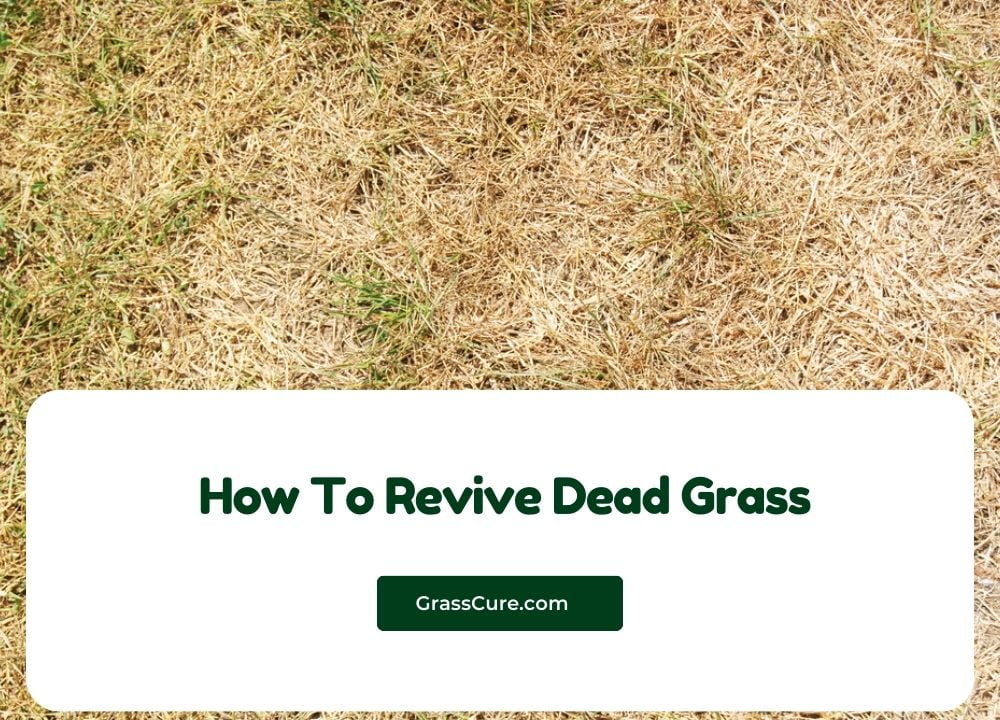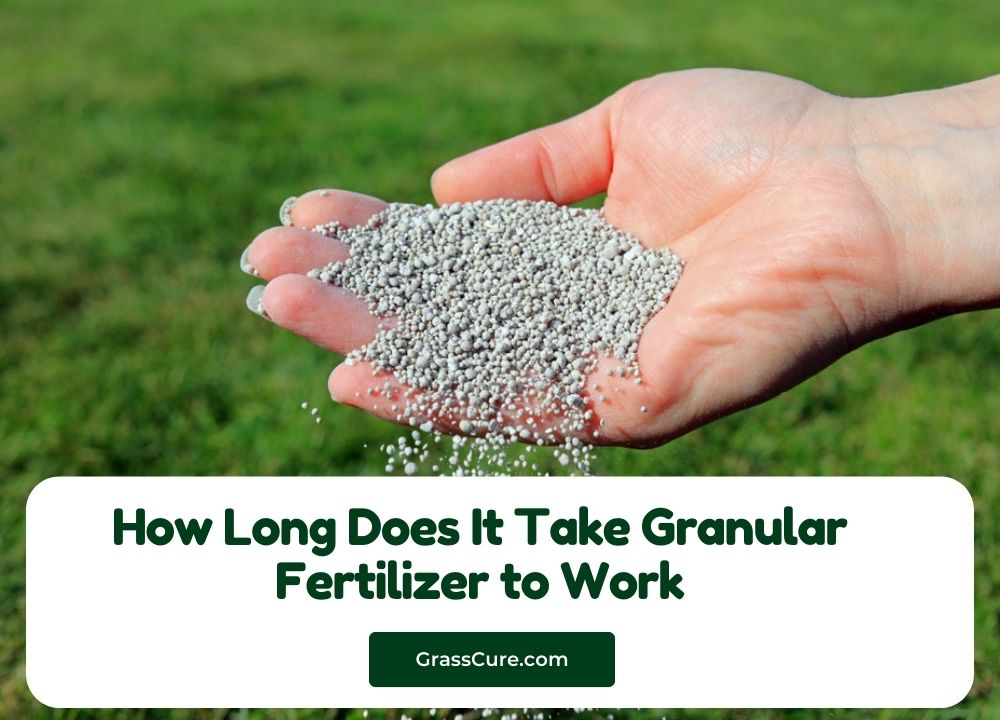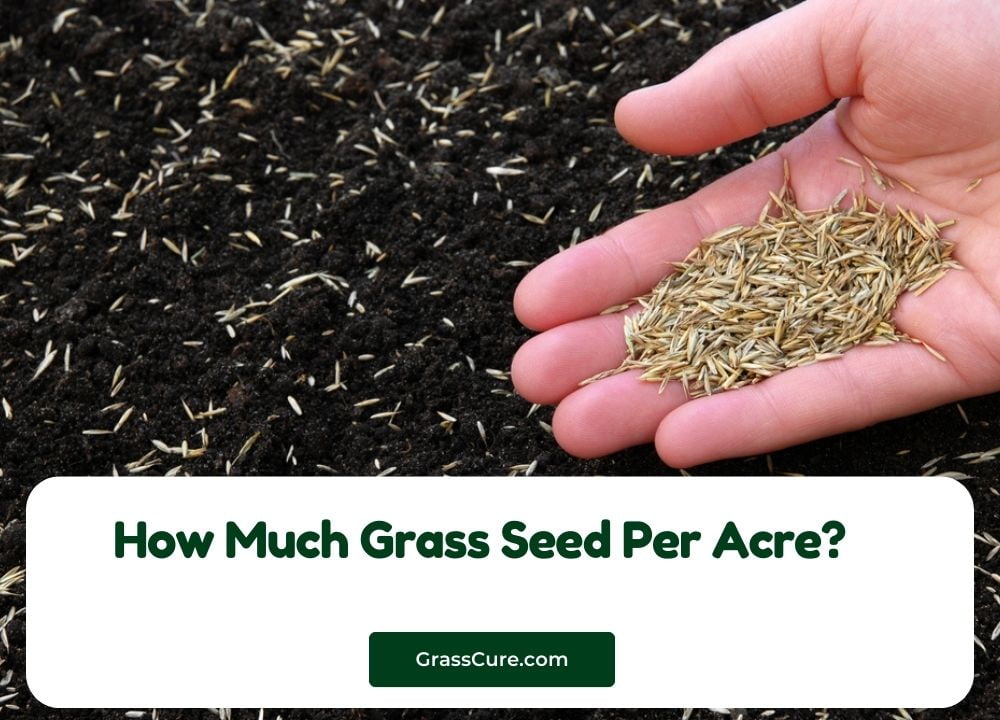When it comes to maintaining a lush and vibrant lawn, effective weed control is crucial, and Roundup is a popular choice for many homeowners and landscapers. This herbicide, primarily containing glyphosate, effectively eliminates unwanted weeds but raises an important question: how long should you wait after spraying Roundup before planting grass seed? Timing is essential to ensure the health of your new grass, as residual chemicals can impact seed germination and growth. In this post, we’ll explore the effects of Roundup on soil health, provide recommended waiting periods, and share best practices for successfully planting grass seed after using this herbicide. Let’s dig in!
Spraying Roundup Grass Seed
Understanding Roundup
What is Roundup?
Roundup is a widely used herbicide primarily containing the active ingredient glyphosate. It works by inhibiting a specific enzyme pathway that is crucial for the growth and development of many plants. This makes it effective in killing a broad spectrum of weeds, including both annual and perennial varieties. Homeowners, landscapers, and agricultural professionals often turn to Roundup for its convenience and effectiveness in managing unwanted vegetation.
Types of Roundup Products
Roundup comes in various formulations to cater to different needs and applications. These include:
- Ready-to-Use Formulations: These come pre-mixed and can be applied directly to the weeds without any additional preparation. They are ideal for small areas or spot treatments.
- Concentrates: These require dilution with water before application. Concentrates are cost-effective for larger areas, allowing users to customize the mixture according to their specific needs.
- Specialty Products: Some Roundup formulations are designed for specific tasks, such as eliminating tough perennial weeds or for use in gardens, lawns, or around trees and shrubs.
Effects of Roundup on Soil and Plants
How Roundup Affects Soil Health
Roundup, particularly due to its active ingredient glyphosate, has a significant impact on soil health. When applied, glyphosate binds to soil particles and gradually breaks down through microbial activity, but this process can take time. The herbicide can alter soil chemistry, affecting nutrient availability and the overall balance of soil microorganisms.
- Microbial Activity: Glyphosate can reduce the diversity and abundance of beneficial soil bacteria and fungi, which are essential for nutrient cycling and overall soil health. This disruption can lead to an imbalance that affects plant growth.
- Nutrient Availability: The presence of glyphosate can temporarily inhibit certain nutrients from being readily available to plants. This can result in nutrient deficiencies for new grass or other plants introduced to the area.
Impact on Grass Seed Germination
Planting grass seed too soon after applying Roundup can lead to poor germination rates and unhealthy growth. Glyphosate can persist in the soil, impacting new seeds in several ways:
- Seed Viability: Glyphosate exposure can inhibit the germination of grass seeds, causing them to fail to sprout or develop properly.
- Growth Symptoms: If grass seeds do manage to germinate in glyphosate-treated soil, they may exhibit stunted growth, yellowing leaves, or even die off as they struggle against the residual herbicide.
Understanding these effects is crucial for anyone looking to establish a healthy lawn after using Roundup. By being aware of the potential impacts on soil health and seed germination, you can make informed decisions about timing and preparation for planting grass seed.
Recommended Waiting Periods
General Guidelines for Waiting Periods
After applying Roundup, it is essential to allow adequate time for the herbicide to break down before planting grass seed. The general recommendation is to wait 7 to 14 days before sowing seeds. This waiting period allows the glyphosate to dissipate and reduces the risk of negatively affecting seed germination and growth.
- 7 Days: For some formulations and in ideal conditions (e.g., warm weather, sandy soils), grass seed may be safely planted after a week. However, caution is advised, especially if the area has experienced heavy rainfall or if the soil is clay-based, which can retain glyphosate longer.
- 14 Days or More: In most cases, waiting 14 days is recommended, particularly in cooler weather or heavy soils. This longer waiting period ensures that the glyphosate has adequately broken down, minimizing the risk of residual effects on newly planted grass.
Specifics Based on Roundup Product
Different Roundup products may have varying waiting period recommendations. It’s crucial to check the label of the specific product you used, as it will provide guidance on the appropriate waiting time. Here are some general notes:
- Ready-to-Use Formulations: These may require less waiting time due to their lower concentration, but still, a minimum of 7 days is generally recommended.
- Concentrates: These typically have higher glyphosate concentrations and may require a longer waiting period of up to 14 days or more, depending on the conditions and the specific product.
Best Practices for Planting Grass Seed After Roundup
Testing Soil for Herbicide Residue
Before planting grass seed, it’s important to ensure that the soil is free from harmful herbicide residues. Here are some steps to follow:
- Soil Testing: Conduct a soil test to check for glyphosate residues and assess the soil’s pH and nutrient levels. Many agricultural extension services or garden centers offer soil testing kits or services.
- Visual Inspection: Look for any signs of chemical buildup, such as poor soil health or unusual growth patterns in existing plants.
- Wait Longer if Necessary: If glyphosate residue is detected or if soil health seems compromised, consider extending the waiting period before planting grass seed.
Preparing the Soil for Grass Seed
Proper soil preparation is crucial for successful grass seed germination and growth. Here are steps to follow:
- Tilling: Lightly till the soil to break up any compacted layers and improve aeration. This helps create an ideal environment for grass seed to germinate.
- Leveling: Ensure the soil surface is level to prevent water pooling, which can hinder seed germination.
- Weed Removal: Remove any remaining weeds or debris to reduce competition for the new grass seed.
- Soil Amendments: Depending on your soil test results, consider adding organic matter, compost, or fertilizers to improve nutrient availability and enhance soil structure.
Choosing the Right Grass Seed
Selecting the right type of grass seed is essential for establishing a healthy lawn. Consider the following:
- Climate Compatibility: Choose grass seed that is well-suited for your climate and growing conditions. Cool-season grasses thrive in northern regions, while warm-season grasses are better for southern areas.
- Sunlight Requirements: Assess the sunlight conditions in your lawn area. Some grasses prefer full sun, while others tolerate shade.
- Seed Quality: Purchase high-quality seed from reputable sources. Look for seed blends that include disease-resistant varieties for better durability.
Frequently Asked Questions (FAQs)
Can I plant other types of plants after using Roundup?
Yes, you can plant other types of plants after using Roundup, but it’s important to wait the recommended period. The waiting time may vary depending on the type of plant you intend to grow and the product used. Always check the label for specific guidelines regarding replanting.
What happens if I plant grass seed too soon after applying Roundup?
If you plant grass seed too soon after applying Roundup, the residual glyphosate can inhibit seed germination and growth. This may result in poor germination rates, stunted growth, yellowing leaves, or even complete failure of the grass to establish.
How can I speed up the decomposition of Roundup in the soil?
While you cannot significantly speed up the natural breakdown process of glyphosate, you can help create a more favorable environment for microbial activity by:
- Increasing soil aeration through tilling.
- Adding organic matter, such as compost, to enhance microbial populations.
- Ensuring adequate moisture levels in the soil, as moisture promotes microbial activity.
Are there any alternatives to Roundup that are safer for planting?
Yes, there are several alternatives to Roundup that may be safer for planting and have fewer residual effects on the soil. Some options include:
- Organic Herbicides: These products often contain natural ingredients like vinegar or citric acid, which can effectively control weeds without long-lasting soil impacts.
- Mulching: Using organic mulch can suppress weeds while improving soil health as it decomposes.
- Mechanical Methods: Hand-pulling weeds or using tools like hoeing can effectively manage unwanted plants without chemicals.
How can I tell if the soil is ready for planting grass seed?
To determine if the soil is ready for planting grass seed, consider the following indicators:
- Timing: Ensure you have followed the recommended waiting period based on the Roundup product used.
- Soil Condition: The soil should be crumbly and well-aerated, not compacted or overly wet.
- No Residual Herbicides: Conduct soil testing if you’re unsure about herbicide residues, and observe for healthy microbial activity and earthworms, which indicate a thriving soil ecosystem.
Conclusion
Successfully planting grass seed after using Roundup requires careful planning and timing to ensure optimal growth and health of your new lawn. Understanding the effects of glyphosate on soil and plants, adhering to recommended waiting periods, and following best practices for soil preparation and seed selection are crucial steps in this process. By allowing adequate time for the herbicide to break down and taking the necessary precautions, you can create a thriving environment for your grass.
As you embark on your lawn care journey, remember that patience and attention to detail will pay off in the form of a lush, green space. If you have any experiences, questions, or tips related to planting grass after herbicide use, feel free to share them in the comments below. Happy gardening!
Additional Resources
Here are some helpful resources for further reading on planting grass seed after using Roundup and general lawn care practices:
- University Extension Services:
- Many universities offer extension services that provide research-based information on gardening and landscaping. Check your local extension office for resources related to herbicides and lawn care.
- Extension.org – Find your local extension service.
- Soil Testing Services:
- Look for local agricultural services that offer soil testing to assess nutrient levels and the presence of herbicide residues.
- SoilTesting.org – A resource to help locate soil testing services.
- Lawn Care Guides:
- “Lawn Care for Dummies” by Peter M. D’Angelo and Lance Walheim: A comprehensive guide covering various aspects of lawn maintenance, including seeding and weed control.
- “The Lawn Care Bible” by Roberta Bailey: Offers insights into creating and maintaining a healthy lawn, including tips for seeding and weed management.
- Organic Gardening Resources:
- Rodale’s Organic Life: This publication provides tips and articles on organic gardening and alternative weed control methods.
- Rodale Institute – Explore resources on organic practices and sustainable agriculture.
- Herbicide Information:
- Environmental Protection Agency (EPA): The EPA provides information on herbicide safety, regulations, and guidelines for use.
- EPA Glyphosate Information – Learn more about glyphosate and its environmental impact.
- Gardening Forums and Communities:
- Online communities like GardenWeb and Reddit’s r/gardening offer a platform to connect with fellow gardeners, share experiences, and seek advice on lawn care and weed management.






